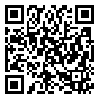Volume 26, Issue 2 (Summer 2025)
jrehab 2025, 26(2): 316-327 |
Back to browse issues page
Download citation:
BibTeX | RIS | EndNote | Medlars | ProCite | Reference Manager | RefWorks
Send citation to:



BibTeX | RIS | EndNote | Medlars | ProCite | Reference Manager | RefWorks
Send citation to:
Delshad B, Arazpour M, Biglarian A, Mousavi S R, Mardani M A. Investigating the Design and Manufacture of a Silicone Texture Pad in a Lumbosacral Orthosis for a Patient With Chronic Low Back Pain. jrehab 2025; 26 (2) :316-327
URL: http://rehabilitationj.uswr.ac.ir/article-1-3560-en.html
URL: http://rehabilitationj.uswr.ac.ir/article-1-3560-en.html
Bahareh Delshad1 

 , Mokhtar Arazpour1
, Mokhtar Arazpour1 

 , Akbar Biglarian2
, Akbar Biglarian2 

 , Seyed Reza Mousavi3
, Seyed Reza Mousavi3 

 , Mohammad Ali Mardani *4
, Mohammad Ali Mardani *4 




 , Mokhtar Arazpour1
, Mokhtar Arazpour1 

 , Akbar Biglarian2
, Akbar Biglarian2 

 , Seyed Reza Mousavi3
, Seyed Reza Mousavi3 

 , Mohammad Ali Mardani *4
, Mohammad Ali Mardani *4 


1- Department of Orthotics and Prosthetics, University of Social Welfare and Rehabilitation Sciences, Tehran, Iran.
2- Department of Biostatistics and Epidemiology, Social Determinants of Health Research Center, University of Social Welfare and Rehabilitation Sciences, Tehran, Iran.
3- Department of Neurosurgery, Shiraz Neuroscience Research Center, Faculty of Medicine, Shiraz University of Medical Sciences, Shiraz, Iran.
4- Department of Orthotics and Prosthetics, University of Social Welfare and Rehabilitation Sciences, Tehran, Iran. ,natelnoory@yahoo.com
2- Department of Biostatistics and Epidemiology, Social Determinants of Health Research Center, University of Social Welfare and Rehabilitation Sciences, Tehran, Iran.
3- Department of Neurosurgery, Shiraz Neuroscience Research Center, Faculty of Medicine, Shiraz University of Medical Sciences, Shiraz, Iran.
4- Department of Orthotics and Prosthetics, University of Social Welfare and Rehabilitation Sciences, Tehran, Iran. ,
Abstract: (2011 Views)
Objective Back pain is one of the major problems of today’s societies. Chronic back pain, which lasts for more than 3 months and has no specific anatomical or pathological cause, includes a high percentage of back pain. In these patients, the sense of proprioception decreases, which can increase pain and complicate the problem. In this study, the method of making belts with textured pads that increase the sense of proprioception by stimulating the sense of touch is investigated.
Materials & Methods In this study, a 48-year-old female patient with chronic low back pain (LBP) which was started 4 years ago referred to Imam Reza Educational and Therapeutic Clinic in Shiraz City, Iran, and used the neoprene belt with silicone pad which was made in this study, for 6 weeks and at least for 8 h a day. The patient’s pain and functional disability were measured by the visual analog scale (VAS) and Oswestry disability index (ODI) before using the belt, and after 6 weeks of using it, her satisfaction with the treatment method was recorded. To make the belt, first, a plaster mold was prepared in the shape of a triangle made of calcium sulfate hemihydrate gypsum, and holes were inserted in it with a marked drill to create fluff, and then the created hole was filled with room temperature vulcanizing sanitary silicone. Finally, the silicone pad was connected to the neoprene belt. The force applied by the belt was equal to 50 newtons, which was measured by a dynamometer, and the correct closing location was marked on the belt based on this force. A notebook with dated pages was provided to the patient, and she was asked to write down the hours of belt use and total daily hours in it.
Results At the beginning of the study, according to the patient’s claim, her back pain was equal to 6 with the numerical visual index, and at the end of the study, it reached 2 and decreased. Also, the score recorded based on the Oswestry disability questionnaire before using the belt was 25, and after 6 weeks of using the belt, it decreased significantly and reached 11. The patient was satisfied with the treatment method used. She had gradually increased the use of the belt due to its positive effects.
Conclusion The use of textured pads in neoprene belts has a positive role in reducing pain and increasing the ability of patients, and if confirmed in wider studies, it can help improve these patients as a prefabricated orthosis.
Type of Study: Original |
Subject:
Orthotics & Prosthetics
Received: 23/10/2024 | Accepted: 2/03/2025 | Published: 1/07/2025
Received: 23/10/2024 | Accepted: 2/03/2025 | Published: 1/07/2025
Send email to the article author
| Rights and permissions | |
 |
This work is licensed under a Creative Commons Attribution-NonCommercial 4.0 International License. |





